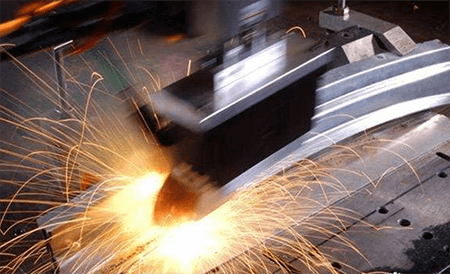If there’s one metal that consistently impresses both in function and appearance, it’s brass. Known for its golden sheen and remarkable versatility, brass has earned its place in everything from everyday items to high-end decorative pieces. Whether it’s a part of a musical instrument, a door knob, or a luxury watch, brass is not just an alloy—it’s a symbol of timeless craftsmanship.
In this article, we’ll explore the world of brass, uncovering its history, properties, and the many ways it continues to shine in both modern and traditional applications. Brass may have been around for centuries, but its appeal has never been stronger. Let’s take a deeper look at why this alloy remains so beloved.
What is Brass?
Brass is an alloy composed primarily of copper and zinc, with varying amounts of other metals like lead or tin. The proportions of copper and zinc determine the alloy’s hardness, color, and other characteristics. Depending on the mixture, brass can range from a bright gold-like color to a more reddish hue.

This combination gives brass excellent strength, resistance to corrosion, and a beautiful golden color. It’s a versatile material that can be molded into a variety of shapes and used in countless applications across industries.
A Brief History of Brass
Brass has a long history, dating back thousands of years. The earliest uses of brass can be traced to ancient Mesopotamia, where it was used for decorative items, coins, and tools. However, it was the ancient Romans who refined the process of brass-making, creating the alloy in large quantities and using it for a range of functional objects, including armor, coins, and statues.
The development of brass in Europe during the Middle Ages led to its use in various architectural applications, particularly in church bells, door hardware, and candleholders. By the Industrial Revolution, brass had become a key component in machinery, plumbing fixtures, and electrical components, further cementing its role as a material of both beauty and utility.
Properties of Brass
1. Durability and Corrosion Resistance
One of the primary reasons brass has remained popular for centuries is its remarkable durability. Brass is highly resistant to corrosion, particularly from water and air. This makes it ideal for use in outdoor environments, such as maritime applications, where the alloy’s resistance to seawater makes it a preferred material for boat fittings and marine hardware.
Brass’s ability to withstand the elements ensures that objects made from it, whether it’s a vintage brass doorknob or a modern brass faucet, remain in good condition for many years.
2. Malleability and Workability
Brass is a highly malleable metal, which means it can be easily shaped and molded into intricate designs. It is often used in casting to create detailed sculptures, jewelry, and ornamental objects. This workability, combined with its attractive appearance, makes it a favorite among designers and artisans.
Applications of Brass
1. Musical Instruments
Brass is perhaps most famously known for its use in musical instruments, particularly in the brass family. Instruments like trumpets, trombones, saxophones, and tubas are made primarily from brass. The metal’s ability to produce a bright, resonant sound makes it the material of choice for these instruments. Brass is also valued for its durability and its ability to withstand the physical demands of playing.
2. Interior Design and Decor
In interior design, brass brings a touch of sophistication and elegance. Brass has made a huge comeback in recent years, with designers incorporating it into lighting fixtures, furniture, and decorative accessories. From vintage-style brass chandeliers to sleek, modern brass lamps, the warm glow of brass adds a touch of luxury to any room.
Brass is also used in hardware, such as door handles, locks, and hinges, adding both beauty and function to architectural features.
3. Plumbing and Electrical Components
In practical applications, brass is indispensable. Its corrosion resistance makes it ideal for plumbing fittings 和 valves, ensuring that pipes, faucets, and connectors stand the test of time. Brass is also used in electrical connectors and components because of its ability to conduct electricity without corroding.
How to Care for Brass
To maintain brass’s radiant shine, regular cleaning is recommended. Brass tends to tarnish over time, developing a darkened patina, which some may find attractive, but others prefer to clean. A mixture of vinegar and salt or store-bought brass cleaners can help restore the metal’s luster.
For outdoor applications, make sure brass items are regularly checked for corrosion, especially if exposed to harsh weather conditions.
Conclusion: Why Brass Continues to Shine
From musical instruments to luxury décor 和 functional components, brass has proven itself to be a versatile and enduring material. Whether it’s prized for its golden appearance or its impressive durability, brass is a testament to both ancient craftsmanship and modern innovation. If you’re looking for a material that combines beauty with strength, brass is a timeless choice that will never go out of style.